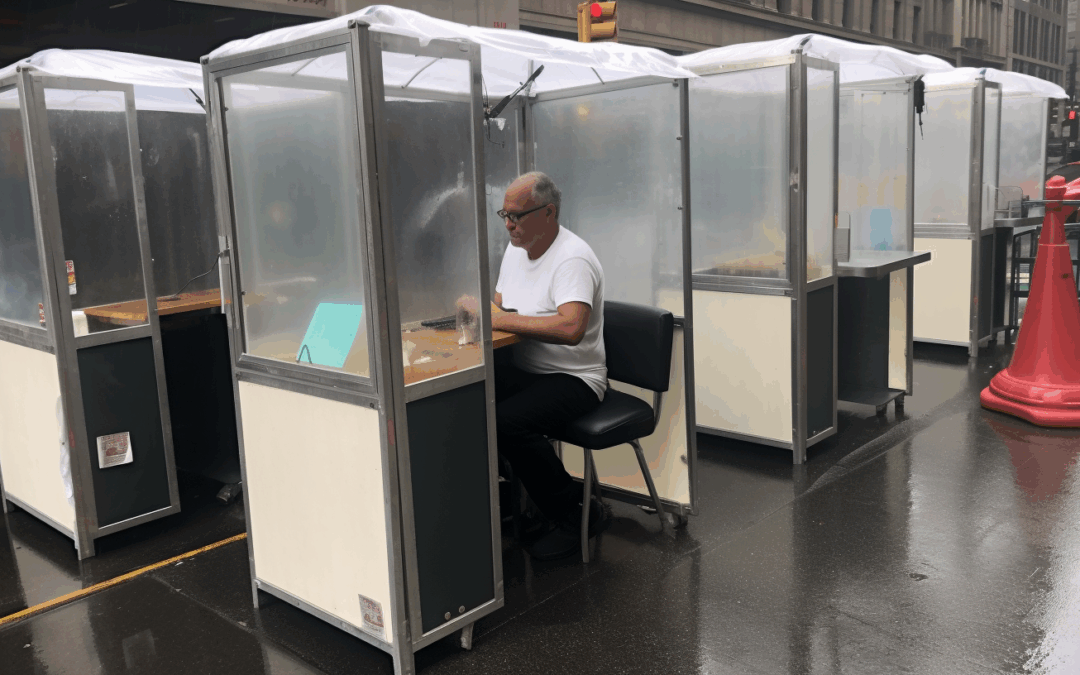The On-Demand Workplace is a concept most companies really haven’t gotten their hands around. Midjourney couldn’t even come up with an image that made sense. However, the picture above probably reflects what some companies and property owners might think about it. Still it is key to having any sort of a hybrid/remote work strategy for most companies. The On-Demand Workplace sounds great for workers and employers, but what about the other side of the coin? It’s a hotel model rather than a leasing model. CRE professionals don’t just need to deal with changes in demand, they need to be providing a different service altogether.
“Is it meat or is it cake, I’ll call it meat-cake” – George Carlin
It will take some time, but I think it will start to make sense. To adapt to the shift towards on-demand workplace models, property owners can explore several strategies to maintain predictable revenue without relying on long-term leases.
Flexible Membership Plans
The idea of memberships has been around for a long time. I had a coworking space years ago and it was essentially a membership model. Property owners need to Introduce flexible membership plans that cater to the varying needs of businesses. Offer options such as daily, weekly, or monthly memberships, allowing tenants to pay for the space they need when they need it.
They should also Implement tiered pricing structures with different levels of access and amenities, encouraging businesses to choose plans that align with their requirements.
With subscription-based models, businesses can subscribe to a certain number of hours or days per month. This allows for a more predictable revenue stream while offering flexibility to tenants.
Coworking Spaces
Once you have the plans, match them against the space. Owners can transform part of the property into coworking spaces to get used to the concept. This allows for a dynamic and shared working environment, attracting freelancers, startups, and remote workers. Depending on demand, they can increase or reduce the amount of space they have allocated to coworking.
Hot desking options allow individuals to reserve a desk for a shorter duration, promoting a more fluid usage model. A lot is going to depend on the local area and what the demand is for coworking space.
Companies like Radious actually make properties available on an as-needed basis. This isn’t always a predictable model, but it makes some unique spaces available that wouldn’t be available any other way.
Your Space Program
It doesn’t have to be all desks either. Companies should designate certain areas for event spaces and meeting rooms that can be rented separately. Many businesses require occasional access to professional meeting spaces without the need for a long-term commitment. My prediction is that this is going to be the fastest-growing part of the shared space economy. It’s not about individuals needing a desk, it’s about teams needing a meeting space.
Property owners should design the property in a way that allows for easy customization of spaces. This can attract businesses with evolving needs that may require different layouts over time. Providing modular furniture and flexible infrastructure enables quick adjustments to the space configuration.
Technology Integration
Once you have the pricing structure and the space, you really need a good system to manage it. Companies should Invest in technology that allows for easy and flexible booking of spaces. They need to Implement online platforms or apps that enable businesses to reserve and pay for the space in real time. Think AirBnB for office/meeting space.
Companies should use smart building solutions to optimize energy usage and maintenance costs, improving overall efficiency and reducing operational expenses.
Networking and Community Building
As usage patterns emerge, building owners want to foster community within the property. They should organize networking events, workshops, and seminars to encourage interaction among tenants. This will create a more attractive environment for short-term occupants.
Ideally, properties should provide amenities such as shared kitchens, lounges, and collaborative spaces to enhance the overall experience and promote a sense of belonging.
Partnerships and Collaborations
Remember that buildings are almost always part of an ecosystem. The key is to understand how it works. Property owners should collaborate with other businesses or service providers to enhance the overall offering. For example, partnering with a coffee shop or a fitness center can add value to the property and make it more appealing to a diverse range of tenants.
By embracing flexibility, technology, and community-building initiatives, property owners can adapt to the changing landscape of workplace preferences and maintain a steady revenue stream without relying solely on traditional long-term leases. changing landscape of workplace preferences and maintain a steady revenue stream without relying solely on traditional long-term leases.



